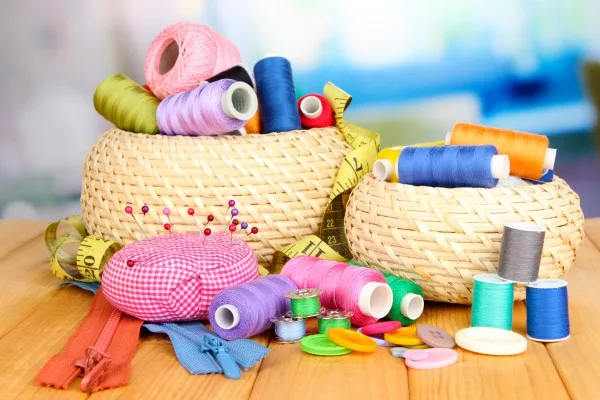
How to Sell Handmade Goods Online: Expert Tips for Crafters
In recent years, the online marketplace for handmade goods has experienced an incredible surge in popularity. Crafters and artisans are increasingly turning to online platforms to sell their products, tapping into a global audience and providing an opportunity for a consistent income stream. Selling handmade goods through these platforms allows creators to meet the growing demand for unique, personalized items while building their personal brand. In this article, we will explore practical tips for selling handmade goods through online platforms and offer advice on how crafters can navigate this rapidly expanding industry.
Choosing the Right Online Platform
When it comes to selling handmade goods, choosing the right online platform is crucial. There are many platforms available, each offering unique features, so it is important to select the one that best suits your products and business model. Popular platforms such as Etsy, Amazon Handmade, and Shopify cater to different types of sellers and products, and each has its strengths and weaknesses.
One of the first considerations when choosing a platform is the fee structure. For example, platforms like Etsy and Amazon Handmade charge listing fees and transaction fees, while others, like Shopify, require a monthly subscription fee in exchange for more control over your store’s branding and design. The pricing model of each platform can greatly influence your decision depending on the scale of your business and long-term goals. Additionally, think about the platform’s audience; Etsy, for instance, has a built-in customer base specifically interested in handmade goods, which can help drive traffic to your store right from the start.
Consider whether you need more control over your store’s design and customization options. Shopify provides greater freedom to design your website the way you want it, but it also requires more time and effort to set up. Etsy and Amazon Handmade, on the other hand, offer a more streamlined setup process but with less flexibility. Each platform’s tools and features should align with your business needs, so assess what works best for you in terms of simplicity, customization, and support.
Evaluating Platform Features
Different platforms offer various features that can help you manage your store more efficiently and increase visibility. Etsy, for example, provides a user-friendly interface that allows you to list your products quickly, integrates payment processing, and gives you access to a massive marketplace of potential buyers. Etsy also offers marketing tools such as promoted listings, which can help increase your visibility within the platform.
Shopify, on the other hand, offers greater control over your brand and website design. While it does require a monthly fee, it also provides advanced tools for tracking inventory, managing customer data, and running email marketing campaigns. Shopify also integrates with social media platforms and offers a range of apps to expand your store’s functionality. If you’re aiming for a high level of customization and more independence over your branding, Shopify might be the right choice. However, the trade-off is the learning curve involved in building and maintaining your online store.
Creating Compelling Listings
When selling handmade goods online, the key to attracting and retaining customers lies in your product listings. Since buyers cannot physically touch or try your products, they rely heavily on your product photos and descriptions to make a purchase decision. High-quality images and clear, informative descriptions are essential to convey the quality and value of your handmade items.
Photography plays an essential role in this process. Ensure that your product photos are clear, well-lit, and showcase your product from multiple angles. If possible, display your product in use—this helps potential buyers envision the item in their lives and boosts their confidence in purchasing. A good photo should show off the details, texture, and quality of your item, so take the time to capture it well. Consider investing in a basic photography setup or hiring a professional photographer if your budget allows. Along with the photos, the product description should accurately describe what the buyer is getting, including materials, dimensions, colors, and any unique features.
Remember that your product description should also reflect the personality of your brand. You’re not just selling a product; you’re selling a story. For handmade goods, customers often want to know about the maker’s process, the inspiration behind the creation, and what makes the product special. This adds value beyond the item itself and can help differentiate you from competitors.
Writing Effective Product Descriptions
When crafting product descriptions, focus on clarity and conciseness while making sure to highlight what makes your item unique. Start with an engaging opening that draws the buyer in. Follow with the key features—such as size, material, color, and any customization options—so the customer knows exactly what they’re purchasing. Make sure to use relevant keywords that potential buyers might search for, but avoid overstuffing your description with keywords. The goal is to make your listing as informative and appealing as possible.
A great product description also tells a story. Whether it’s about the craftsmanship, the source of materials, or the inspiration behind the design, a story can help create an emotional connection with the buyer. For example, if you’re selling a handmade necklace, describe the artisan process, the materials used, and the symbolism behind the design. A well-told story can turn a simple product into something much more compelling, encouraging customers to see it as a unique treasure rather than just another item for sale.
Marketing Your Handmade Goods
In today’s competitive online marketplace, simply listing your handmade goods is not enough to generate consistent sales. Effective marketing is key to driving traffic to your store and increasing visibility. While many platforms offer built-in marketing tools, you should also take advantage of independent marketing strategies to boost your online presence. Social media, in particular, is one of the most effective channels for marketing handmade products, especially on visually-driven platforms like Instagram and Pinterest.
Social media allows you to showcase your products, share behind-the-scenes glimpses of your creative process, and connect with potential customers on a personal level. Instagram is particularly powerful for selling handmade goods because it emphasizes high-quality images and storytelling. By sharing captivating photos and videos of your products, you can build an engaged following that’s likely to turn into loyal customers. Regularly post on Instagram Stories and use relevant hashtags to reach a broader audience. You can also leverage Instagram’s shopping feature to allow users to purchase directly from your posts.
Pinterest is another great platform for marketing handmade goods. Create boards around your product categories or themes that resonate with your target audience. Use detailed descriptions and keywords to make your pins discoverable. As with Instagram, Pinterest users often look for inspiration, so curate your pins to reflect lifestyle images that show your products in real-life settings. A strong social media presence, coupled with the right platform for your store, will help you reach and engage your ideal customer base.
Leveraging Social Media for Sales
Social media is an indispensable tool for driving sales. Not only can you showcase your products, but you can also create a sense of community around your brand. Engage with your followers by responding to comments, sharing user-generated content, and running giveaways or contests. This kind of interaction fosters trust and loyalty, which is crucial for long-term success. Additionally, consider collaborating with influencers or other crafters to extend your reach and grow your audience.
Paid advertising on social media platforms can also be effective for boosting visibility, especially if you’re just starting out. Platforms like Instagram and Facebook offer targeted advertising, allowing you to reach specific demographics based on age, location, interests, and more. A well-executed ad campaign can drive more traffic to your store and ultimately lead to increased sales.
Pricing Your Handmade Goods
Pricing your handmade goods appropriately is one of the most critical decisions you’ll make as a seller. It’s important to set a price that not only reflects the value of your time and materials but also ensures that your business remains profitable. When pricing your products, start by calculating the cost of materials and the amount of time spent making the item. Then, factor in additional costs such as shipping, packaging, and platform fees. Once you have your base cost, consider adding a markup that reflects your desired profit margin.
Beyond the cost of production, you also need to account for market demand and competitor pricing. Research similar products on your chosen platform to understand what other sellers are charging. While you don’t necessarily want to undercut the competition, you do want to ensure that your pricing is in line with industry standards. Additionally, make sure to leave room for promotions or discounts that may arise as part of your marketing efforts.
Competitor Pricing and Market Research
Researching competitor pricing is a crucial step in determining the right price for your handmade goods. By examining how similar products are priced, you can gauge where your products fit in the market. Keep in mind that pricing is not just about being competitive; it’s also about positioning your products as valuable. If your products are higher quality or have unique features, you can justify a higher price point. However, ensure that your prices are still attractive to your target market.
Another way to ensure you’re pricing your products correctly is by conducting market research. Look for trends in the types of products that are selling well, and adjust your pricing strategy based on that information. Running promotions and special offers, especially during holidays or special events, can also help you attract customers while still maintaining a profitable margin.

Customer Service and Retention
Providing excellent customer service is crucial to the success of your online business. Promptly respond to customer inquiries, ship orders on time, and resolve any issues in a professional and courteous manner. Good customer service can lead to positive reviews, repeat business, and word-of-mouth recommendations—all of which are invaluable for growing your business.
Customer retention is just as important as attracting new customers. Offering personalized experiences, exclusive discounts, and keeping in touch through email newsletters or social media can help foster customer loyalty. Additionally, always encourage satisfied customers to leave reviews, as these can help build credibility and trust with potential buyers.
Handling Customer Feedback and Reviews
Reviews play a significant role in shaping a customer’s purchasing decision, especially when shopping online. Encourage your happy customers to leave feedback, and thank them for their time. If you receive negative reviews, respond calmly and professionally, offering solutions to resolve any issues. Addressing complaints quickly and efficiently can turn a dissatisfied customer into a loyal one. Always keep in mind that reviews, both positive and negative, provide valuable feedback that can help improve your business.
Conclusion
Selling handmade goods online can be a highly rewarding and profitable venture. By selecting the right platform, creating compelling listings, marketing effectively, and providing excellent customer service, you can build a successful online business. With dedication and the right strategies, your handmade goods business has the potential to thrive in the competitive online marketplace.



